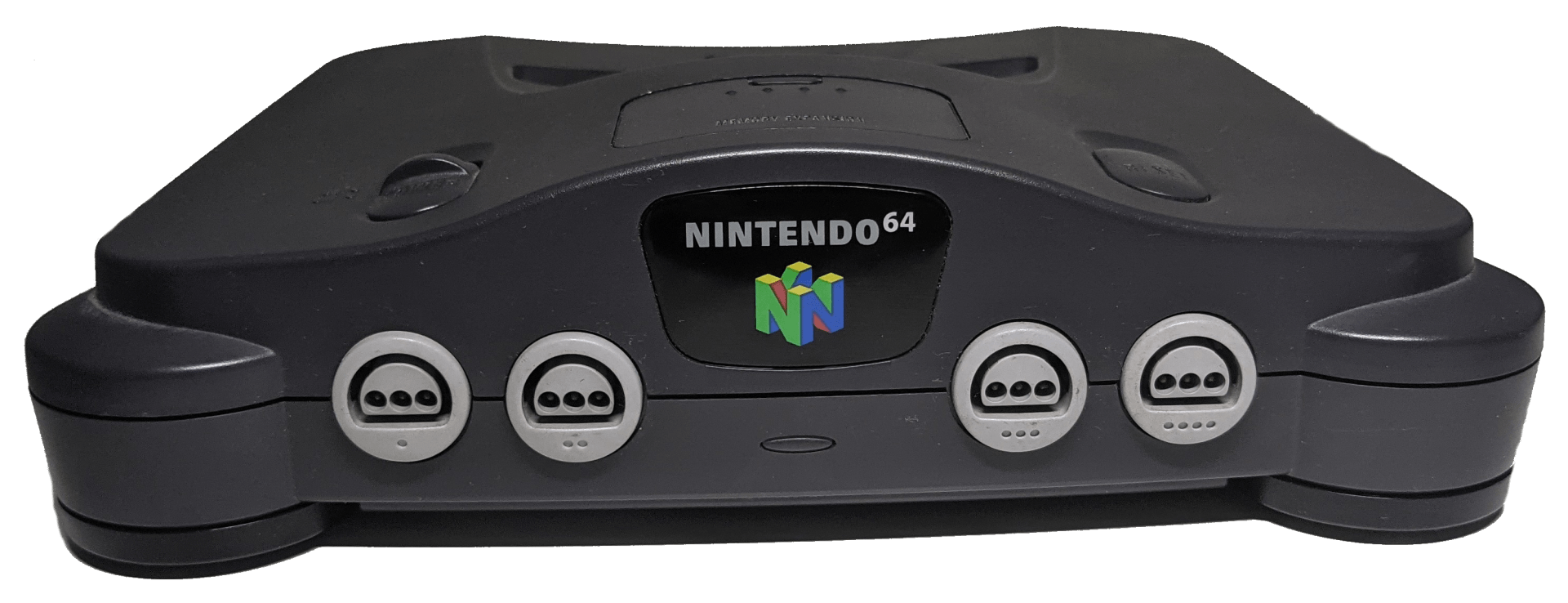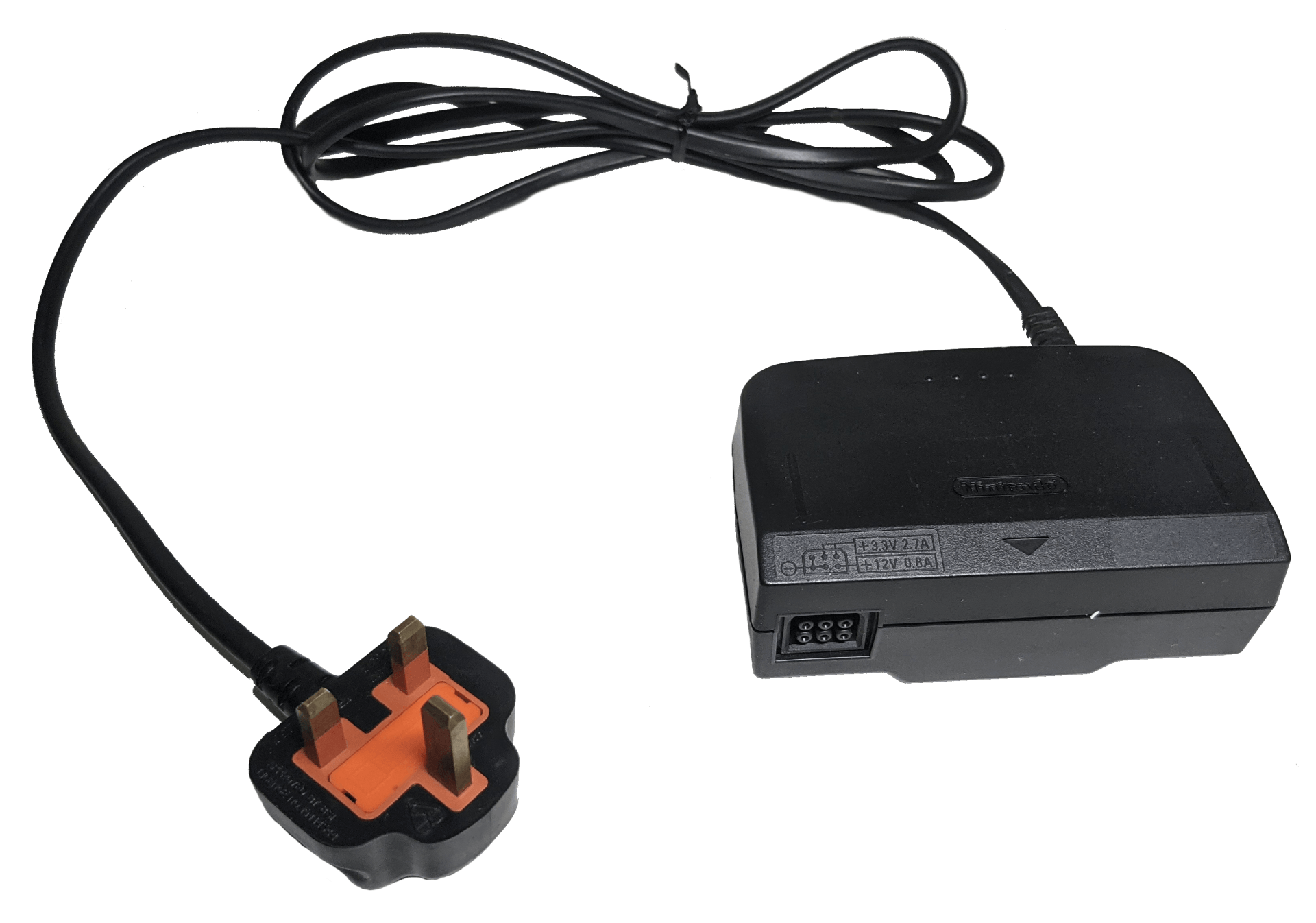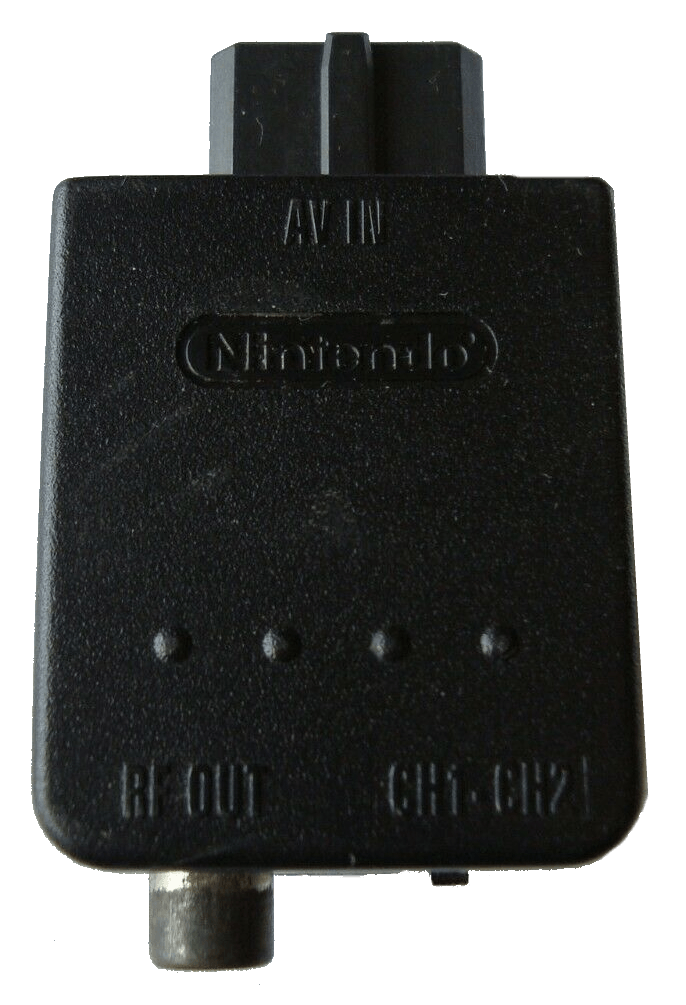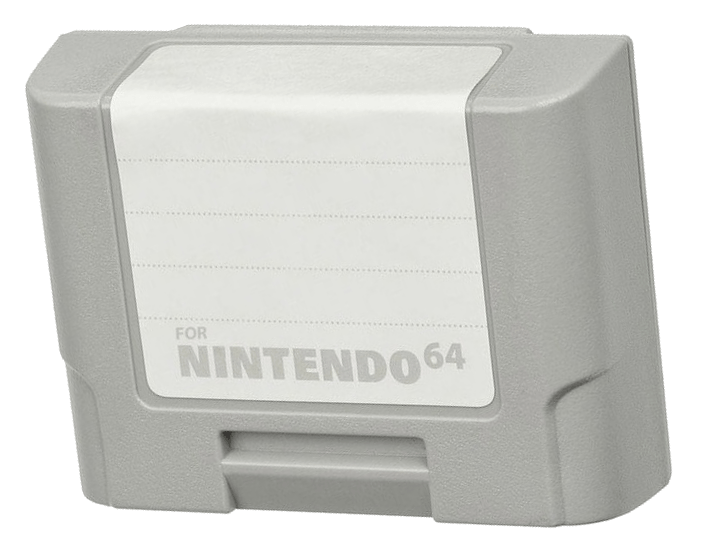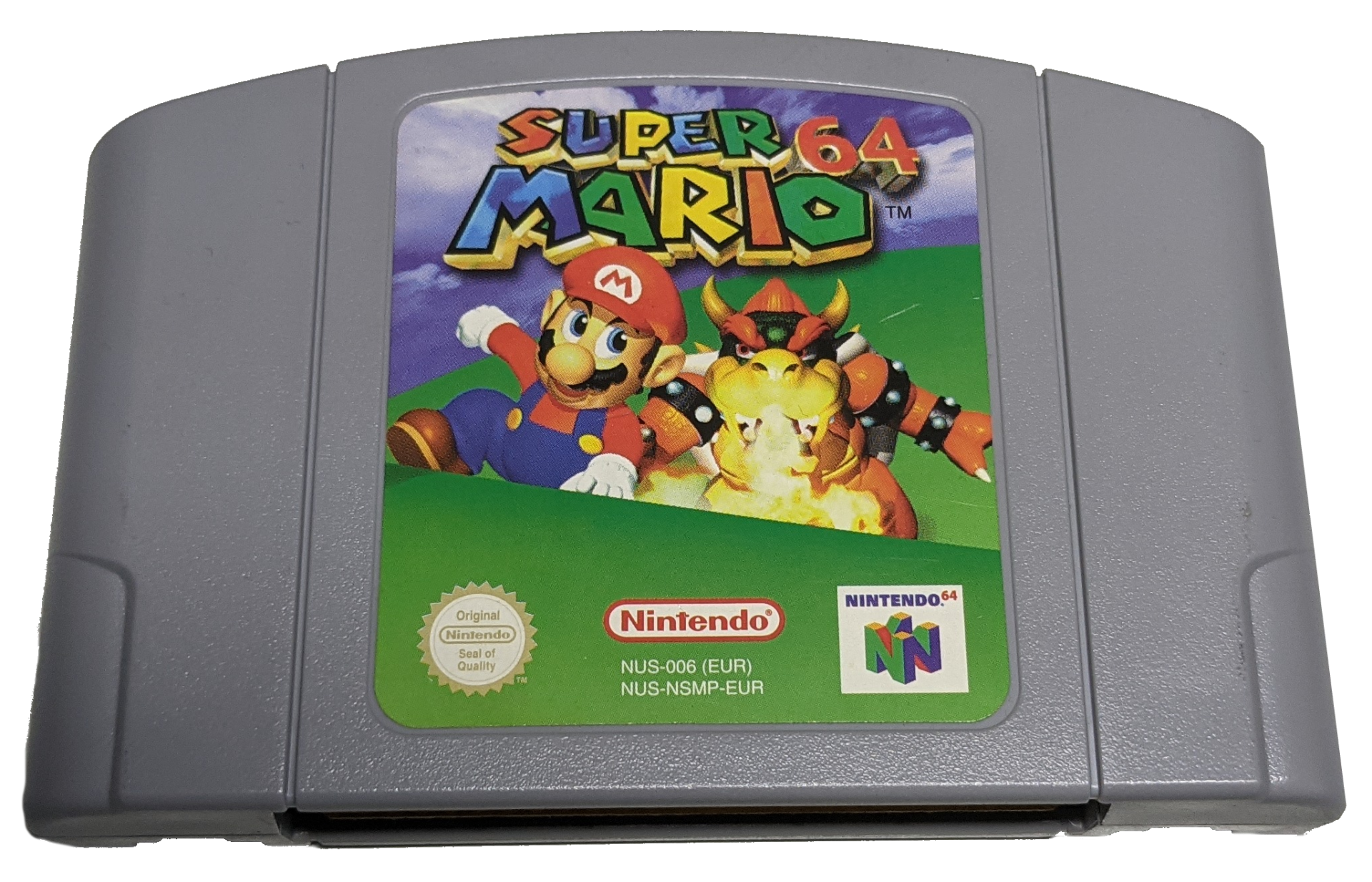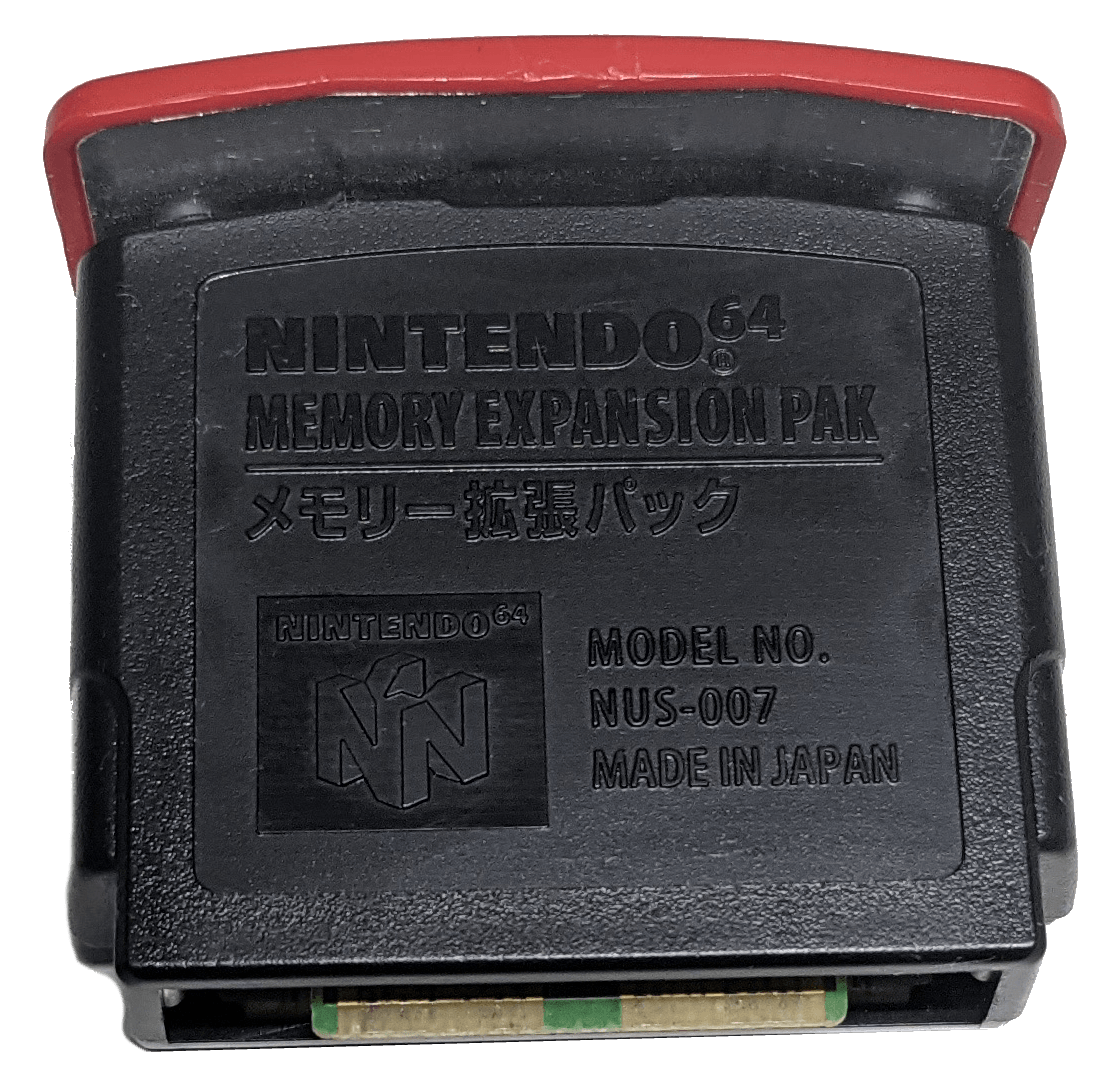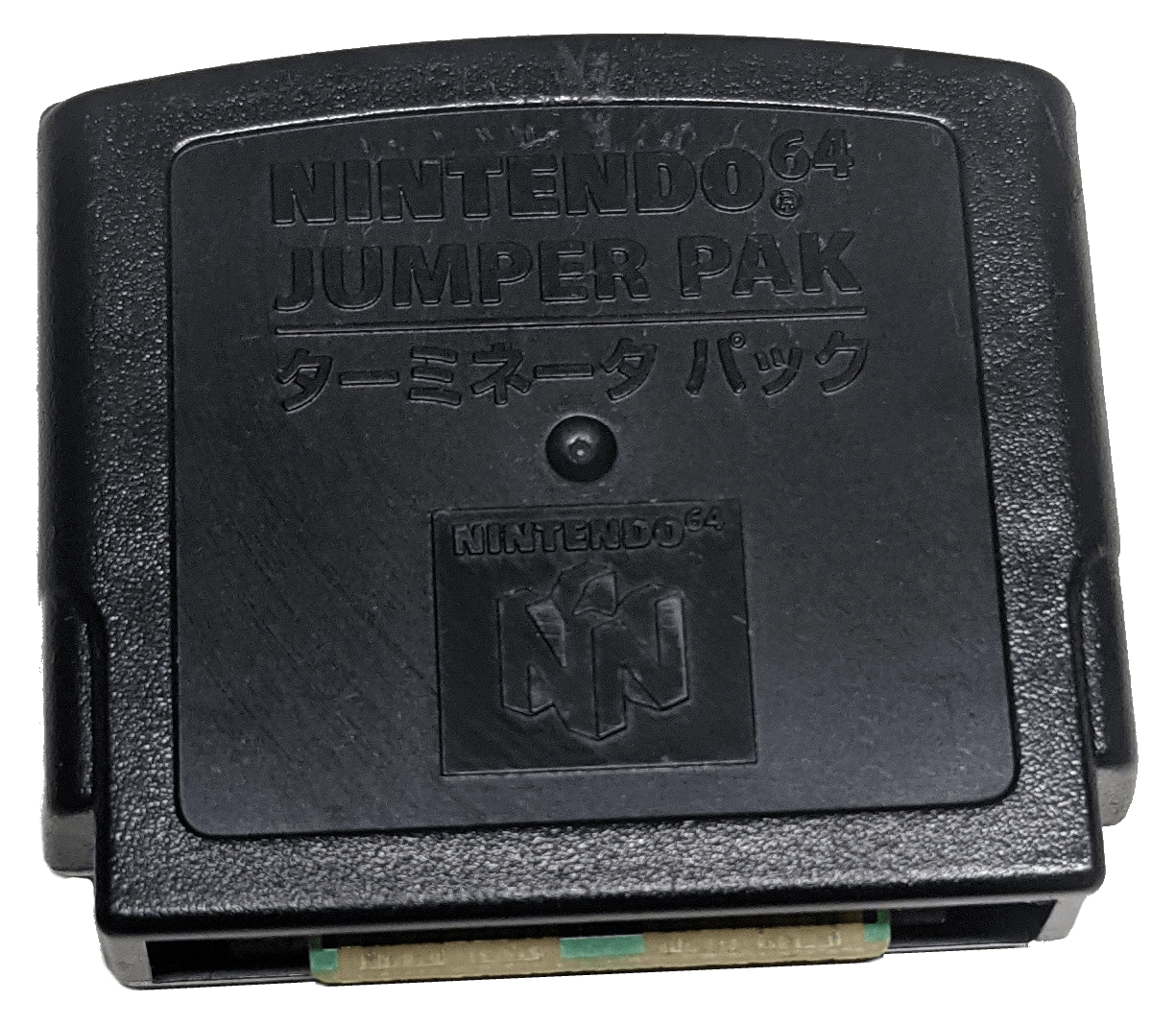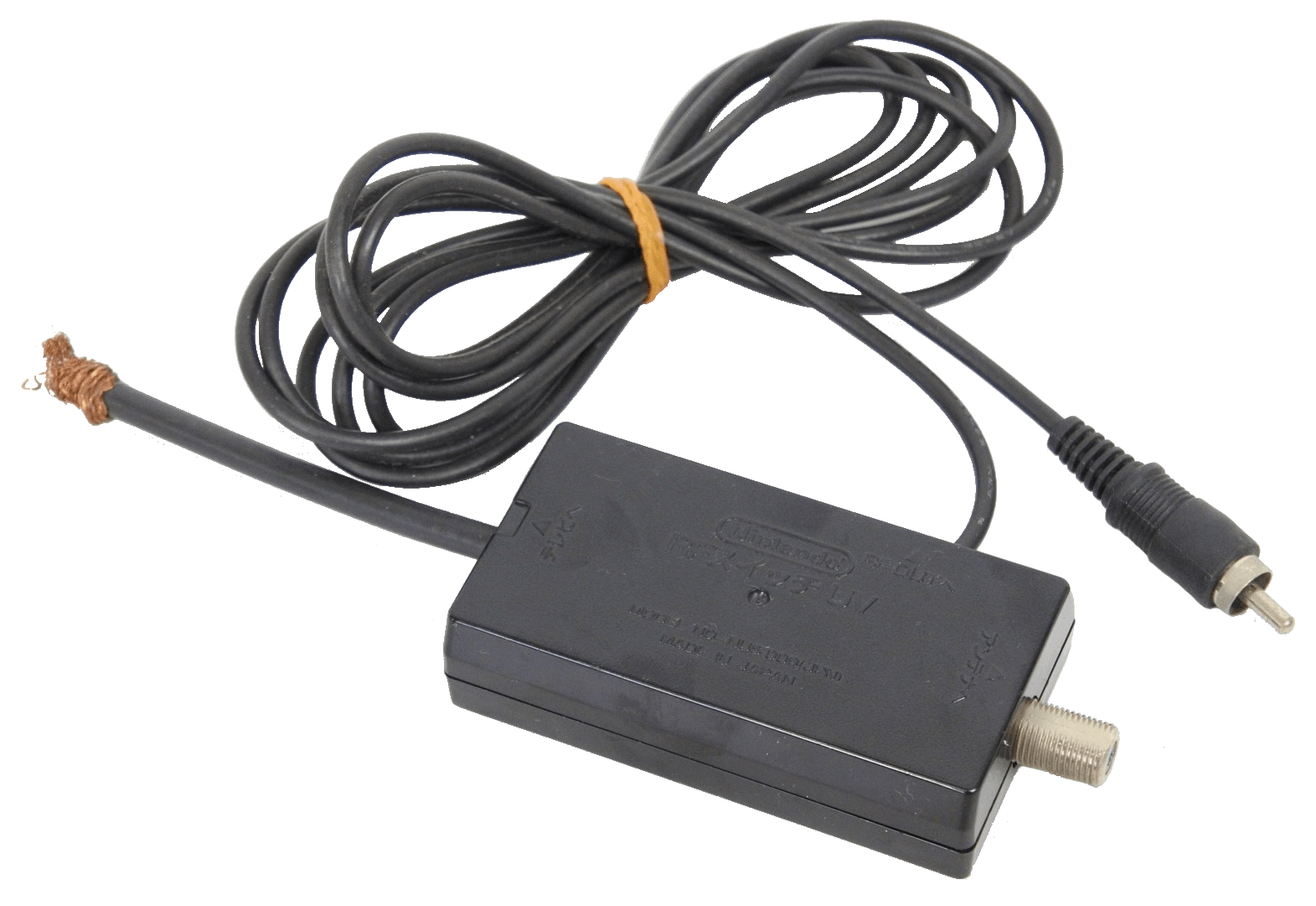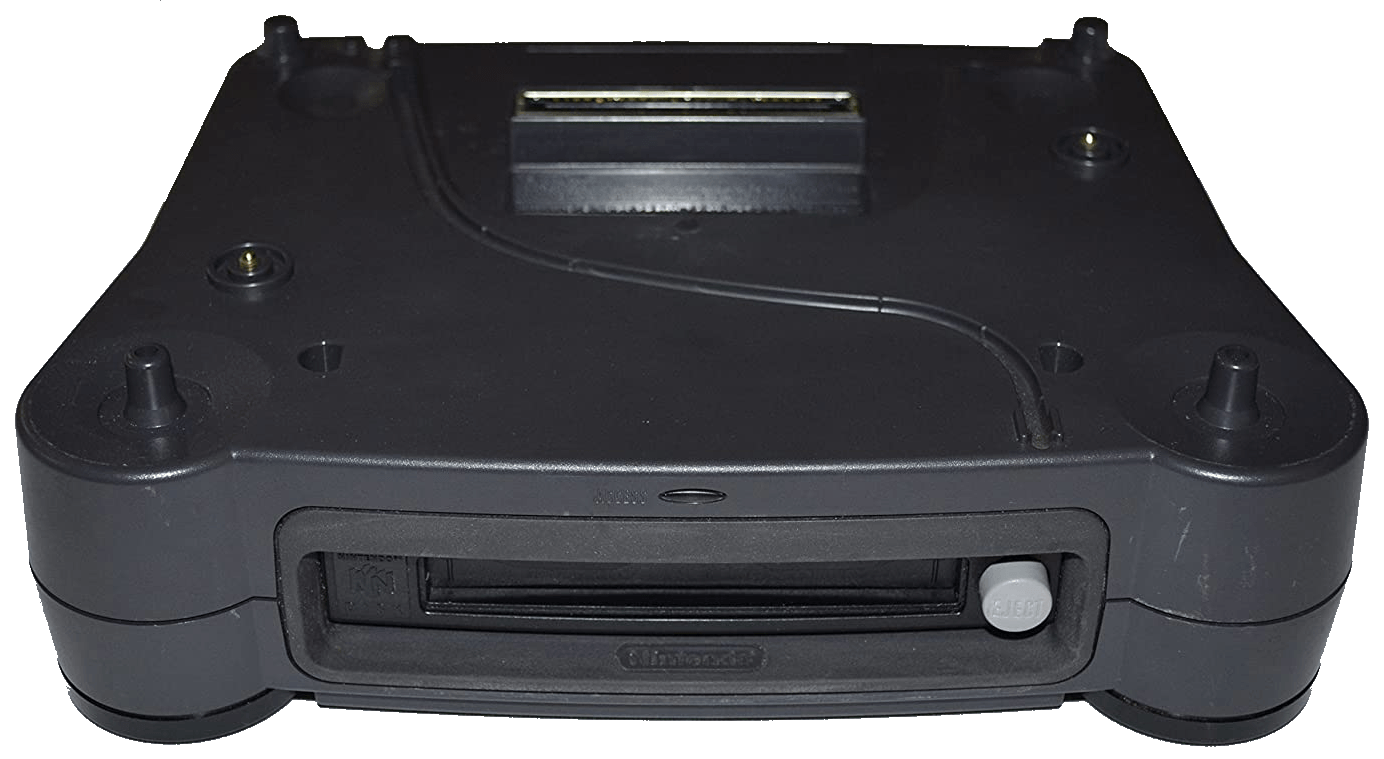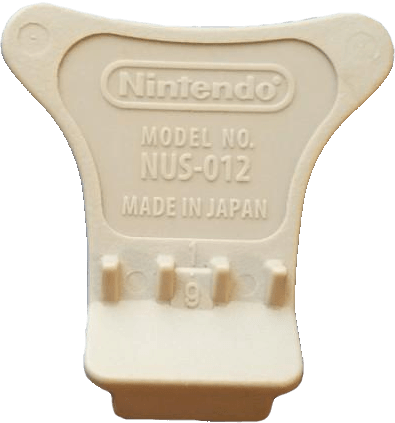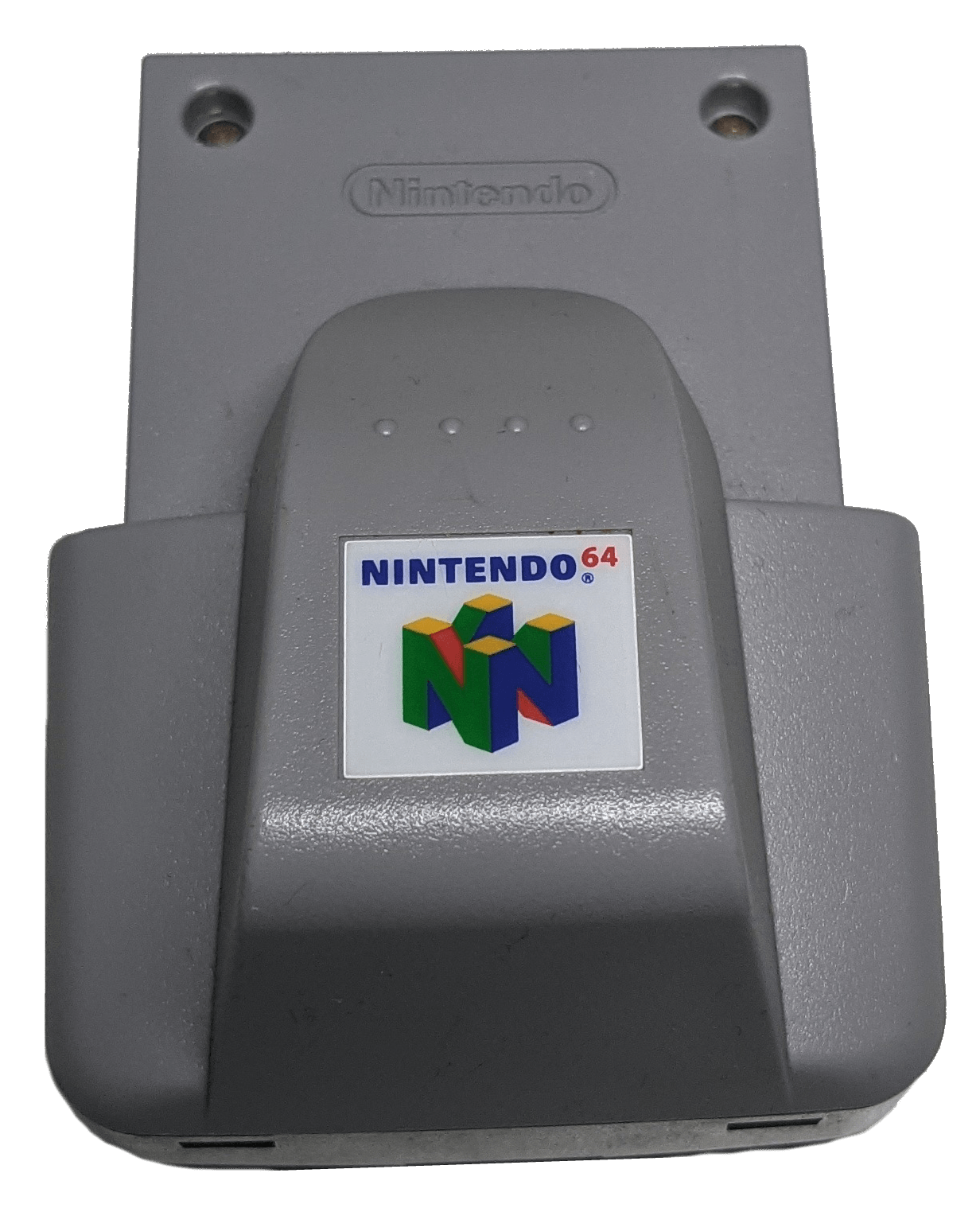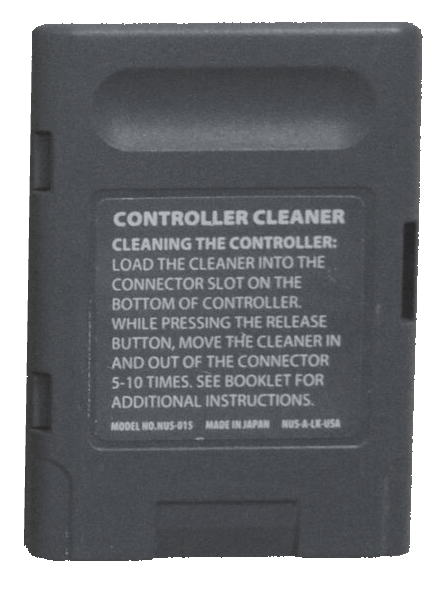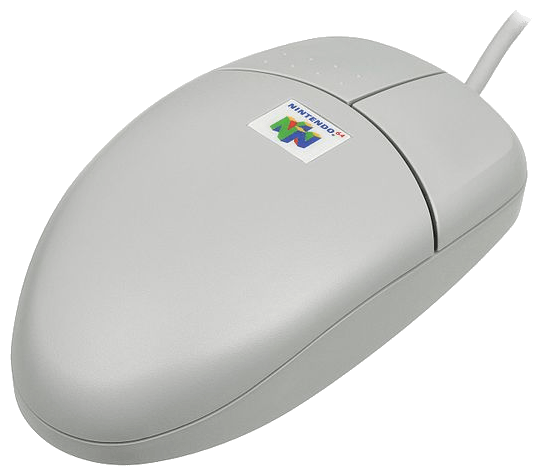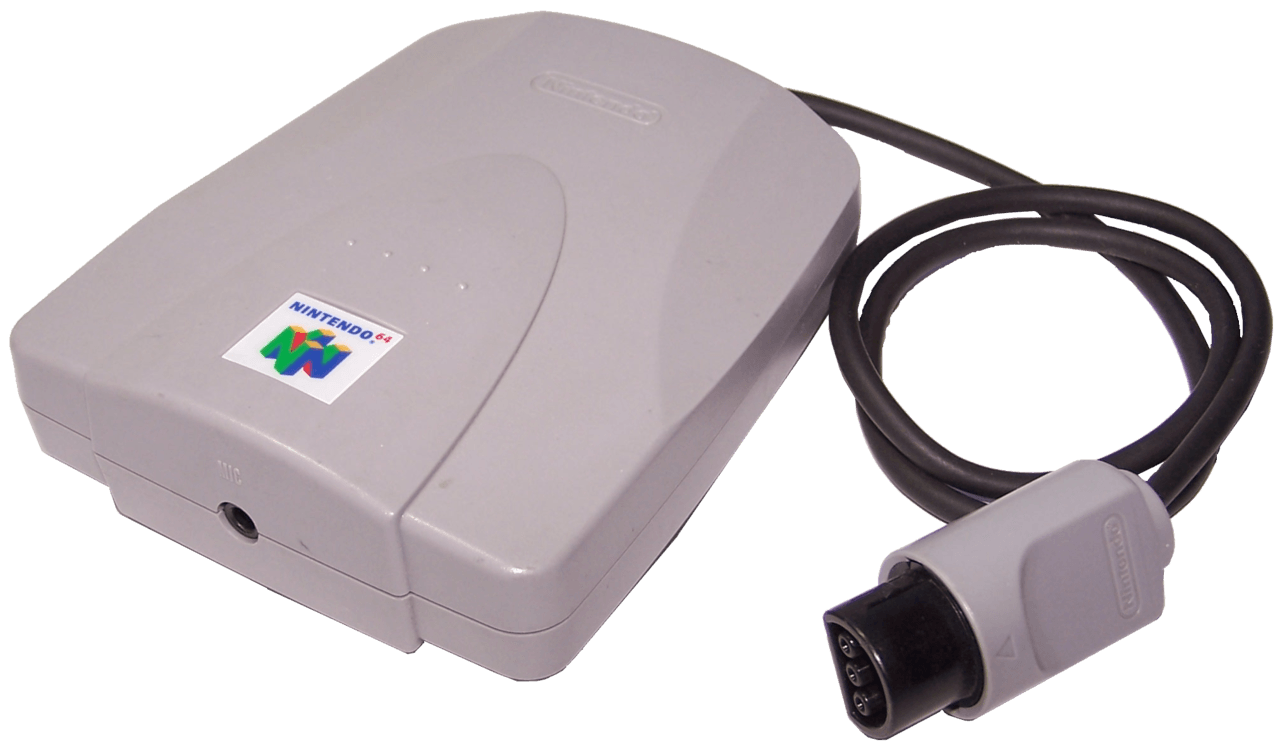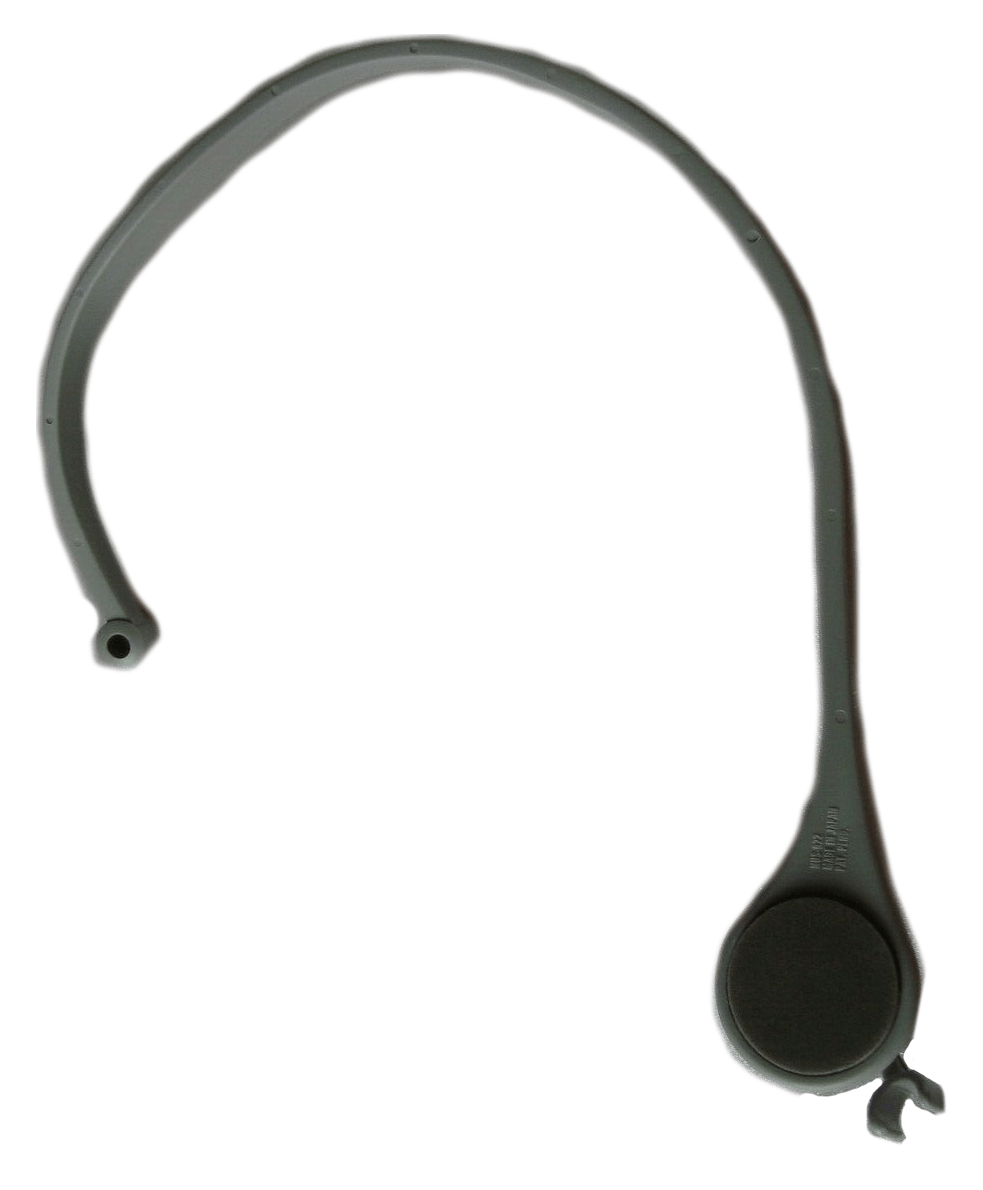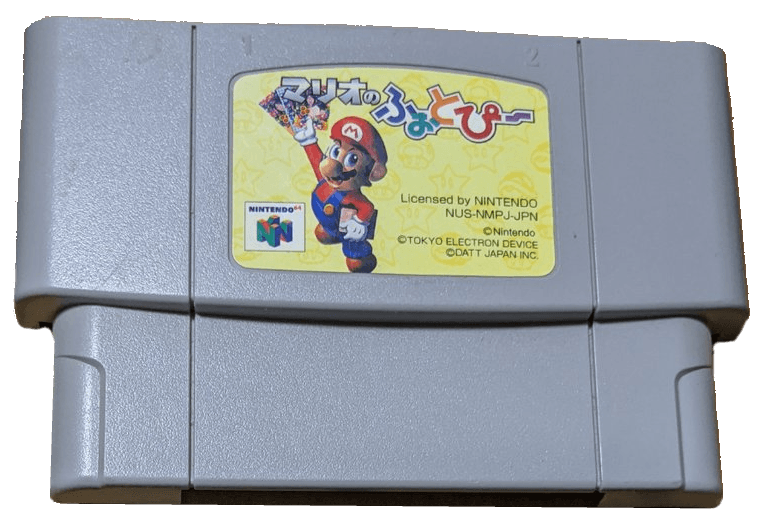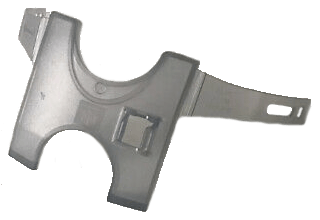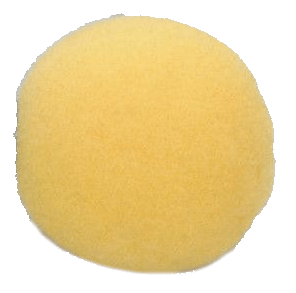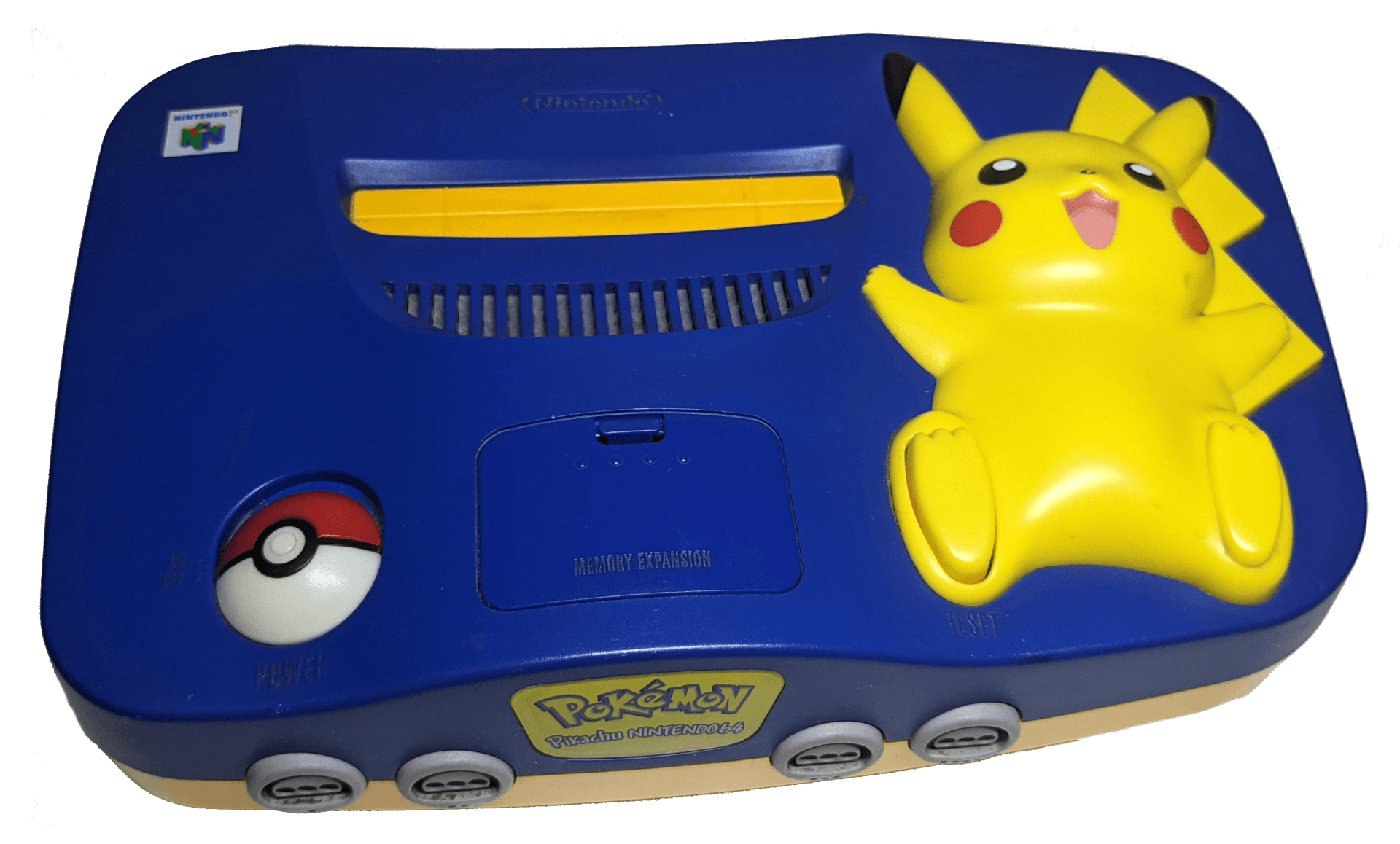Welcome to Luckless Heaven! This website is (soon to be) the biggest encyclopedia for Nintendo-related information on the Internet. Currently under construction.
NUS-001
Nintendo 64
The Nintendo 64 is the first console to support full-fledged 3D games, allowing more games to feature three dimensional movement and environments. Named after its 64-bit processor, the Nintendo 64 was the most powerful console when it released in 1996, though it controversially still used game cartridges, rather than discs. This helped games load much faster, but cartridges lacked the vast storage space of discs, and dissuaded developers from working with Nintendo.
NUS-003
RF Modulator
The RF Modulator is a converter that allows the Nintendo 64 to use a RF display cable to connect to a television, as the console does not have a direct RF port, only a proprietary AV port. The RF Modulator was essential for older televisions that had no better video inputs than RF. This peripheral is also compatible with the Super NES and the Nintendo GameCube.
NUS-004
Controller Pak
The Controller Pack is a memory card that is connected to the expansion port on the back of the Nintendo 64 Controller, allowing for game data to be saved for compatible games. The Controller Pak holds 32KB, split into 123 "pages" but limited to 16 save files. "Pages" is a simplified term for storage units, similar to "blocks" used for the GameCube and Wii, with different games requiring a different number of "pages".
NUS-005
Nintendo 64 Controller
The Nintendo 64 Controller is interestingly designed, with three prongs that are held in different ways, depending on the game. The left prong has an L shoulder button and directional pad, for 2D games. The middle prong has a Start face button, a Z shoulder button and an analog stick, for 3D games. And lastly, the right prong has an A and B face button, an R shoulder button, and four C-directional buttons for camera controls in 3D games. All the face buttons are brightly coloured, so that buttons are easier to recognise. The controller was included with the console, but could also be purchased separately.
NUS-006
Nintendo 64 Cartridge
A cartridge that contains Nintendo 64 software and games, these are inserted into the slot on top of the console. The bottom of the cartridge has different indentations, based on the region, meaning that Nintendo 64 cartridges from one region cannot physically be inserted into Nintendo 64 consoles from another region.
NUS-006(-01)
A version of the Nintendo 64 cartridge that has 256 kilobits (32KB) of SRAM. This allowed Nintendo 64 games to save player data, without requiring the use of a Controller Pak. This cartridge saw limited use, due to how expensive it was for developers to use.
NUS-007
Nintendo 64 Expansion Pak
The Expansion Pak can be inserted into the memory expansion slot on the Nintendo 64 console, to double the Nintendo 64's RAM from 4MB to 8MB. This peripheral is essential for certain games to run, such as "Donkey Kong 64" which came bundled with the peripheral, and is also required for the 64DD add-on. Some games don't require the Expansion Pak, but do benefit from improved screen resolution when it is plugged in, such as "Excitebike 64". There's no disadvantage to leaving the Expansion Pak plugged into the console, so it's a direct upgrade from the Jumper Pak (see below). The two peripherals can be told apart by the big red heat-sink on the Expansion Pak.
NUS-008
Jumper Pak
The Jumper Pak is included with every Nintendo 64 console and is found inside the memory expansion slot. It serves very little purpose, existing to "close" the system memory, confirming to the console that there is no more RAM that can be used outside of the pre-installed 4MB. There's no disadvantage to replacing the Jumper Pak permanently with the Expansion Pak, though the Nintendo 64 will not start if you have neither plugged into the memory expansion port. The Jumper Pak was not sold in stores, but could be ordered through Nintendo's online store if it was misplaced.
NUS-009
RF Switch
The RF Switch is used alongside the RF Modulator to provide the Nintendo 64 with RF compatibility, allowing it to be used with older televisions. The RF Switch plugs into the RF modulator, which is inserted into the Nintendo 64. The RF Switch can then be connected to the back of the television, while also providing a port for an antenna wire, allowing users to still watch television normally while the Nintendo 64 is connected.
NUS-010
64DD
The 64DD is an add-on for the Nintendo 64, that connects to the expansion connection on the bottom of the console. The 64DD is a disk drive with a real-time clock that allows the Nintendo 64 to play games and software from discs, allowing for far bigger and more ambitious games to be produced. The peripheral was a slight attempt to win back some of the third-party developers that detracted from the Nintendo 64 due to the limitations of cartridges. Due to multiple delays and the 64DD's miserable sales on launch, the 64DD was quickly discontinued after only receiving 10 games, and was never released outside of Japan.
NUS-013
Nintendo 64 Rumble Pak
The Nintendo 64 Rumble Pak is a peripheral that is connected to the expansion port on the back of the Nintendo 64 Controller, allowing the controller to rumble and vibrate according to what occurred in the game, to enhance immersion. The Rumble Pak requires two AAA batteries to function, and is only compatible with certain games, though a lot of games ended up supporting the Rumble Pak. The Rumble Pak was bundled with "Star Fox 64 / Lylat Wars".
NUS-015
Controller Cleaner Pak
The Controller Cleaner Pak is a peripheral similarly sized to the Controller Pak and Rumble Pak, that is used for cleaning the expansion port on the back of a Nintendo 64 controller. The Controller Cleaner Pak was sold as part of the Nintendo 64 Cleaning Kit, which was never released in Japan.
NUS-017
Nintendo 64 Mouse
The Nintendo 64 Mouse is a classic two-button ball mouse, that connects to the Nintendo 64 console via the controller port. It was bundled with "Mario Artist: Paint Studio" and was only available to Randnet subscribers. Since it's exclusive to users of the 64DD, only 64DD games and software are really made for the mouse. However, the Nintendo 64 Mouse can be used with other games, as the mouse movement functions as the Nintendo 64 Controller's analog stick, with the left click and right click functioning as the A and B buttons, respectively.
NUS-018
Unidentified
NUS-019
Transfer Pak
The Transfer Pak is a peripheral that is connected to the expansion port on the back of the Nintendo 64 Controller. It has its own cartridge slot that Game Boy games can be slotted into, allowing the Game Boy games to interact with Nintendo 64 games. The Transfer Pak was bundled with "Pokemon Stadium" and was only compatible with a small number of games. The Transfer Pak cannot typically be used to play Game Boy games on a television, in a similar fashion to the Super Game Boy or Game Boy Player.
NUS-020
Voice Recognition Unit
The VRU (short for Voice Recognition Unit) is a peripheral that allows the players voice to be used to interact with the game. Being an early form of speech recognition hardware, it was only possible for the VRU to recognise a limited number of words, though Nintendo saw the potential in its use with videogames. The VRU is bundled with "Hey You, Pikachu!", and is only compatible one other game, "Densha de Go! 64". Additionally, the VRU is region-specific, so players with an American VRU can't play "Densha de Go! 64" without a Japanese VRU. No European VRU was ever released due to the wide range of European languages, and accents within each language.
NUS-023
SmartMedia Cartridge
The SmartMedia Cartridge is a Nintendo 64 Cartridge with a two SmartMedia slots on top. This cartridge was only used for the Japanese-exclusive image editing software "Mario no Photopi", which allowed users to transfer their images to a SmartMedia memory card for use with a computer or other devices.
NUS-024
Unidentified
NUS-027
Unidentified
NUS-028
Video Capture Cartridge
The Video Capture Cartridge is a Nintendo 64 cartridge with four ports. From left to right, they're for a microphone, video output, left audio output and right audio output, allowing the cartridge to collect video and audio data. It was bundled with the 64DD game "Mario Artist: Talent Studio" and can be used with other "Mario Artist" 64DD games.
NUS-101
Nintendo 64 (Pikachu Model)
The Pikachu Model of the Nintendo 64, released in mid-2000, has a big plastic Pikachu molded on it, the mascot character from "Pokemon". This model functions identically to a standard model Nintendo 64, though some aesthetic changes are made, such as the power light being moved from the front of the console, to inside Pikachu's cheeks. The expansion slot on the bottom of the console is also sealed off, as this model is too wide for the 64DD to fit normally.


